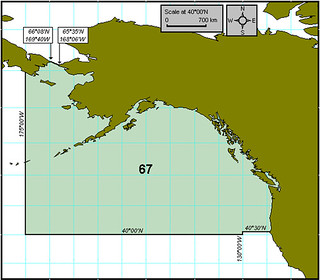
Ashley Ahearn, Earth Fix
Update Dec. 24, 9:00 a.m.: NOAA’s Seafood Inspection Program has issued a report to Chinese officials with its findings regarding the tainted geoducks from Alaska and Washington. In the letter, U.S. authorities note the actions that have been taken in response, ensure that geoduck clams and mollusks for export from Area 67 meet safety requirement and request lifting of China’s ban on shellfish imports.
Ninety percent of the geoduck harvested in Washington are sold to China and Hong Kong. It’s an indicator of how much the Northwest shellfish industry relies on exports to China.
In early December, the Chinese government instituted a ban on all shellfish imports from a large swathe of the West Coast after finding two bad clams. One from Alaska had high levels of the biotoxin that causes paralytic shellfish poisoning. The other came from Puget Sound and tested high for inorganic arsenic. Washington does not test for arsenic in shellfish.
- Read: China Imposes First-Ever West Coast Shellfish Ban
- Read: Arsenic Was Toxin Of Concern In Wash. Geoduck Shipment
The crushing economic impacts of China’s move are hitting tribal fisherman in Puget Sound hard for the holidays.
At the Suquamish Tribe’s reservation on Puget Sound, Suquamish geoduck diver Lydia Sigo stands on a dock that would usually be crowded with boats bringing in their catches of geoduck. The clams can fetch up to $150 per pound in China. But today it’s quiet. There are no boats on the water — none of the 25 Suquamish tribal divers are working right now.
“That’s 25 families that really need to buy their kids Christmas presents or pay their mortgage, pay their rent,” Sigo says. “For me, I can’t keep going on like this for very long.”
The tribe is losing $20,000 each day that the ban is in place, but the impacts of the ban are being felt well beyond the reservation.

John Jones, a geoduck diver with the Suquamish Tribe, is out of work right now
because of the Chinese ban on shellfish imports. (Photo: Ashley Ahearn)
“My brothers are from Port Gamble and they’re out of work,” says John Jones, another Suquamish diver. “They shut down diving everywhere, not just for us but for the state. It impacts a whole lot of people, not just this community but all communities throughout Puget Sound, Alaska, Oregon.”
The shellfish industry in Washington is worth $270 million annually, and China is the biggest market for exports.
This is the broadest shellfish ban China has ever put in place, but it’s not the first time China has banned a major import from the U.S. Beef imports from the U.S. have been banned for the past ten years. More recently, China rejected about half a million tons of U.S. corn because it contained a genetically modified strain.
Chinese officials have been slow to reveal details of their shellfish testing methods. That’s prompted some to raise concerns about political motivations behind the shellfish ban.
“It is possible that it could be retaliation for something,” says Tabitha Mallory, a postdoctoral research fellow at the Princeton-Harvard China and the World Program. “That has happened in the past.”
In 2010 China banned salmon imports from Norway, just after the Nobel Peace Prize was awarded to the political activist Liu Xiaobo.
Mallory says it’s unclear what kind of larger political statement China could be making with the shellfish ban.
“I think it’s good to consider all the possible motivations for this,” Mallory says. “But I don’t think that we should write off the possibility that it is a legitimate accusation.”

